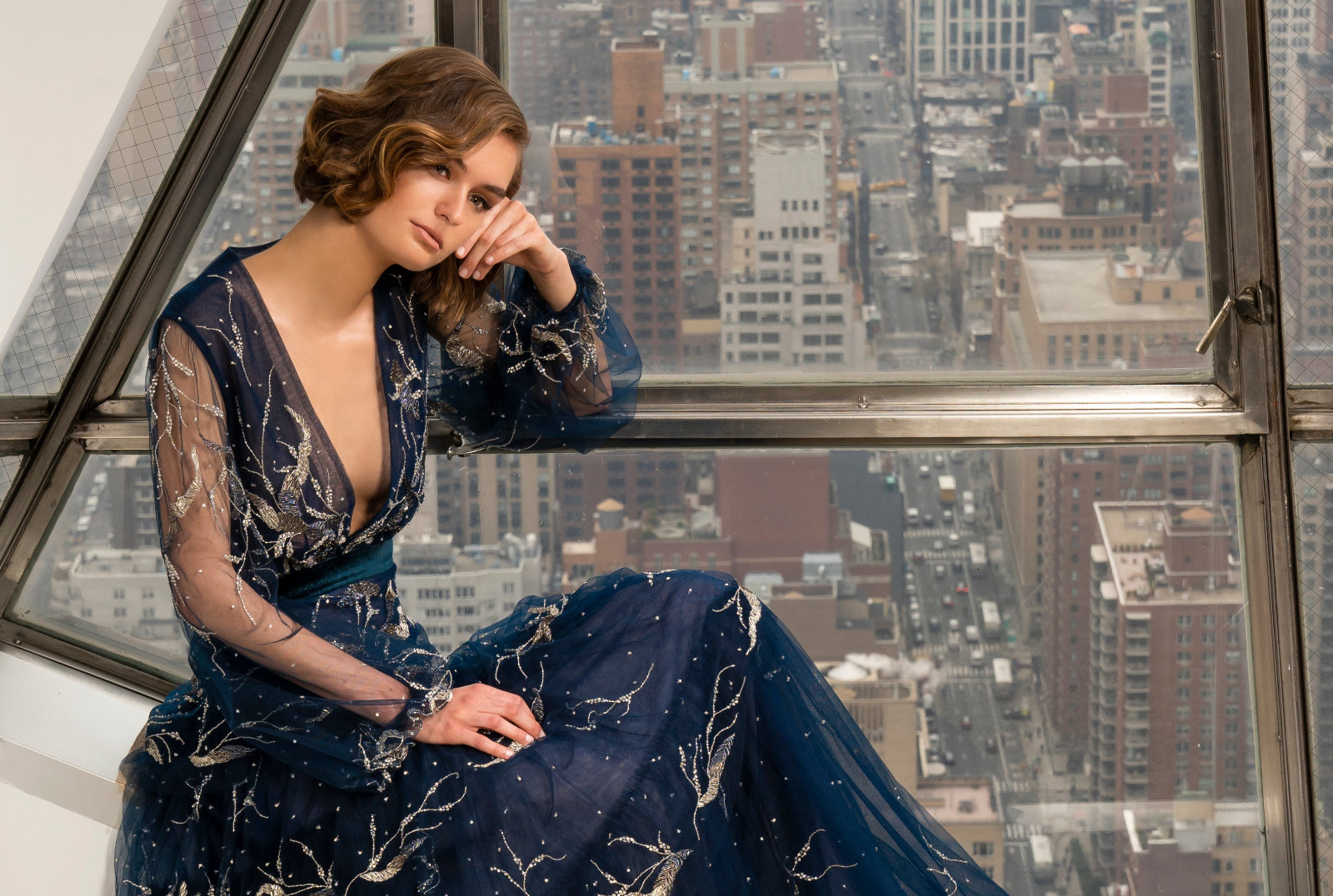
From Reem Acra’s fall 2021 collection.
FASHION Starting the same year as Lucire, Reem Acra commemorates 25 years since she began her label. Jack Yan interviews her
From issue 46 of Lucire
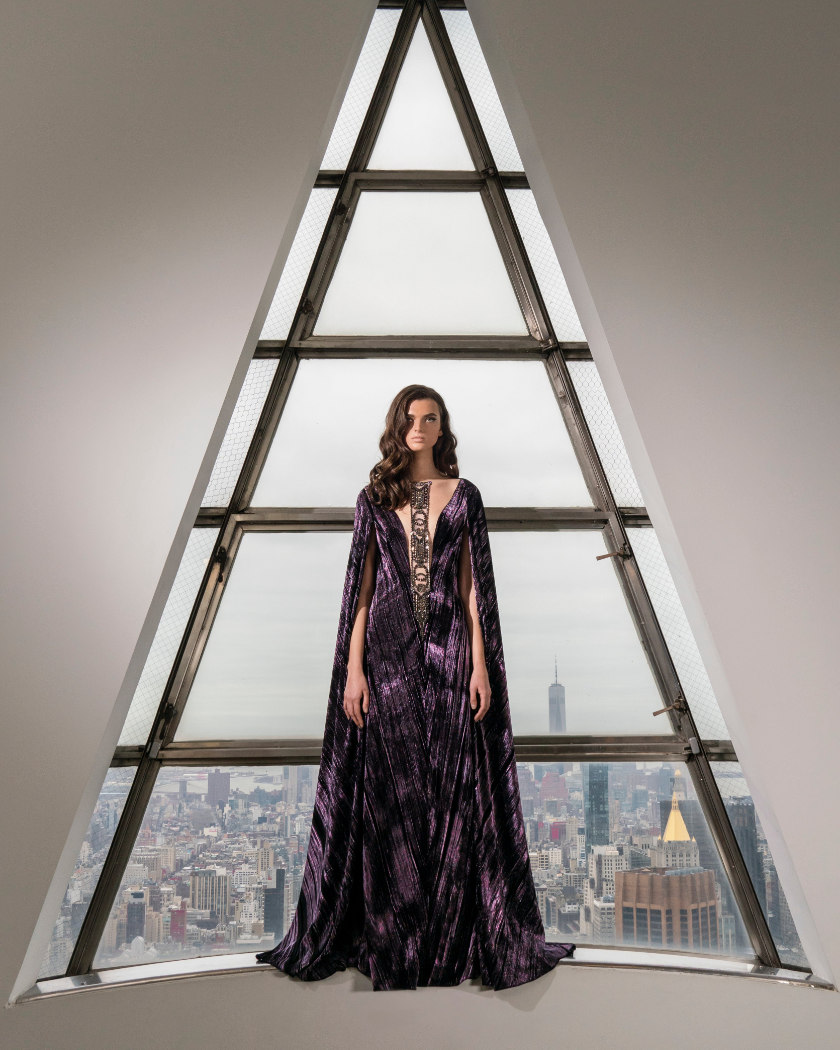
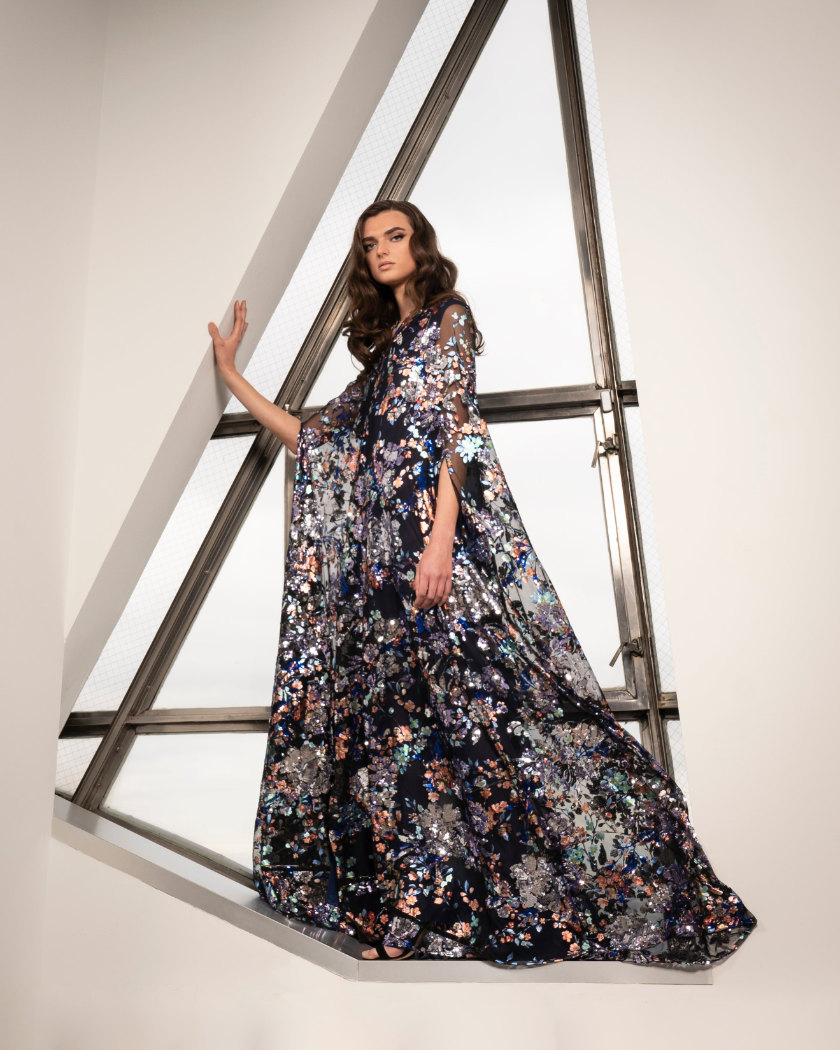
Above: From Reem Acra’s fall 2021 collection, Classic Glamour.
Who is more fitting to commemorate Lucire’s 25th anniversary than a fashion designer who started her business the same year? Reem Acra, who this magazine covered beginning with her fall 1999 collection at New York Fashion Week, launched her bridal collection in 1997, and has been one of the US’s—and the fashion world’s—most admired talents. Her meticulous attention to detail, luscious fabrics and colours, and an international design sensibility have been with her since the start and distinguished her work, and she continues to impress with each collection, both in her ready-to-wear line and her bridal one.
Born in Beirut to parents who worked at the American University of Beirut Medical Center—her mother worked in family medicine while her father was a professor and public health expert—Acra remembers a ‘magical’ time growing up. She elucidates, ‘It is hard to put it into words. Beirut used to be a place where everything melted together. There is a bond between those who lived there during a certain period of time. The glue was a mixture of art, culture, music, and nightlife. My design approach and creativity definitely came from my background.’
Her initial skills in sewing came from her grandmother and a seamstress who lived with the family. ‘I was lucky to be surrounded by women who wanted to teach me the craft. I also wanted to take it all in. My grandmother taught me how to craft beautiful flowers from scraps and leftover fabrics from my dresses. Our live-in seamstress always needed an extra set of hands to pull the fabric from the other side of the machine. While helping her, I would watch every stitch.’ By age five, the young Reem Acra had designed her own wardrobe, though she says she did not think of becoming a fashion designer at this stage.
She attended the American University in Beirut, graduating with a business degree in 1982. While there, she joined the fashion club, and held a show there in June that attracted a substantial audience. At that point, she says, ‘It dawned on me that I would end up being a designer.’
One design that got Acra noticed at the fashion show was a silk organza gown made from her mother’s tablecloth. ‘The tablecloth dress was a last-minute design idea. I was invited to a party at my college and had nothing new in my wardrobe at the time. I had to be quick, I looked around and noticed my mother’s tablecloth and imagined I could turn it into a dress—just in time to go to the party. I thought my mother would rather have a beautiful dress than a very nice tablecloth covering the table.’
A fashion editor spotted the gown and offered to host a show for Acra. From there, there was no looking back for her design career, though she had to leave her native Lebanon—in the midst of a civil war—to achieve her goals.
‘When I left Beirut in 1983, I cried the entire way till I landed in America. It was leaving everything behind. I felt as though I was on my own with the future ahead of me but I was also scared of the new life that I was about to build.’ Attending the Fashion Institute of Technology (FIT) in New York, Acra graduated magna cum laude in 1986 and won the fashion design department’s award for her year. Afterwards, she studied at the École supérieure des arts et techniques de la mode (ESMOD) in Paris. ‘I loved being at FIT and ESMOD,’ she recalls. ‘I enjoyed learning the process of design and seeing how various cultures approach design in different ways.’
From there, Acra headed to the Far East, working in Hong Kong and Taiwan, where she felt she came to understand the manufacturing side of the business.
She then had a stint as an interior designer. ‘I believe that design is the same language in interior and fashion. I had the opportunity in the early 1990s to work in the interior design world. It fulfilled me. I enjoyed expressing my creativity in the format of interior. To me it is all about creating an experience.’
Circumstances drew her back to the fashion world, when, on a bet, she designed a bridal gown for a friend in three weeks. ‘When I designed my friend’s wedding dress for the first time, I used my creativity and my ability to use scraps of fabrics to create the petals of flowers on the waist of the dress. I added my own personal touch of green leaves to the dress—this was something no one had ever seen before,’ she recalls.
‘I asked a friend to photograph the dress that I styled on a hanger. The picture was unusually pretty and different from anything that you would see at the time. The result was a beautiful picture. I decided to send it to The New York Times. Why not? The New York Times loved the picture and featured it!’
She launched her bridal line in 1997, creating what she describes as a ‘magical world’. ‘I took the brides from the pure white simple dresses to the ornate dresses with magical touches. It was about the sculpted necklines, the shapes of the waistlines and the long trains and matching veils. Everyone was drawn to the world I created.’
She believed that her business degree helped her: ‘It is important that we are not only creative but also understand the business part of the company.’ Despite this, she believes starting a business—taking a fun, carefree approach—the same way would not work today, and says that a more structural approach would be more appropriate today.
In 1999, she felt sure about her direction and held her first show. She bought US$20,000 in fabric and put it on her American Express, and was certain of her success. ‘There were signs everywhere and my instincts led me to believe I would succeed. The buyers were waiting in line to see my new collection and orders were pouring in.’
With an order for 30 wedding dresses, she sought out 89-year-old Max Kane, who owned a factory. ‘The Max Kane story was unreal … I stood at the doorstep trying to explain that I had no money for the dresses. Max looked at me and then handed me a few hundred dollars from his pocket and sent me to buy my first roll of fabric. That was the beginning of my future, I will never forget that moment. Still to this day, his great-granddaughters are in my life.’
Over the last two-and-a-half decades, the Reem Acra brand continued to innovate with a sharp focus on the next thing. ‘Competing makes you stronger—I always have the confidence of coming up with the next trend before anyone else,’ says Acra. She has also managed to stay upmarket, and never looked to go downmarket to get mass sales. ‘It is not easy to stay true to oneself. Life is tempting. I have decided that I love the creative process and that I care about the uniqueness of my brand.’
continued below
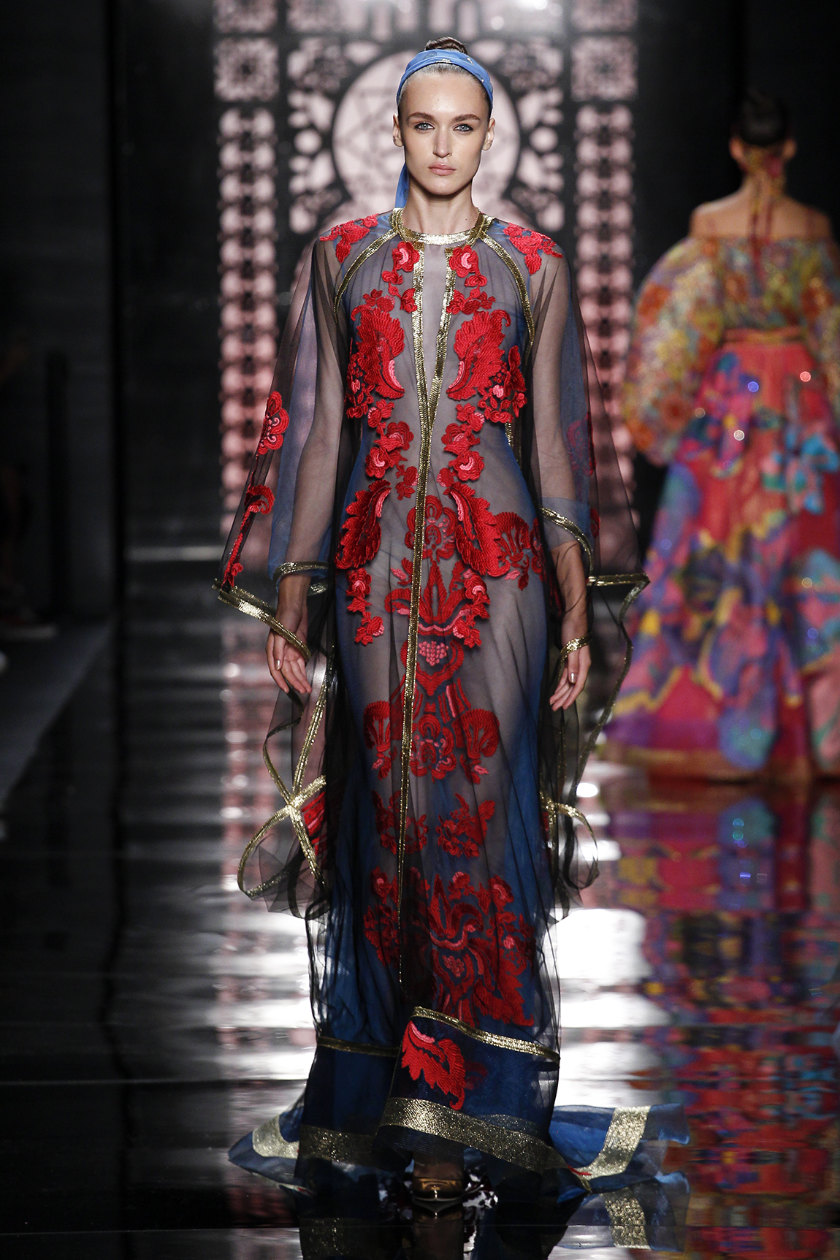
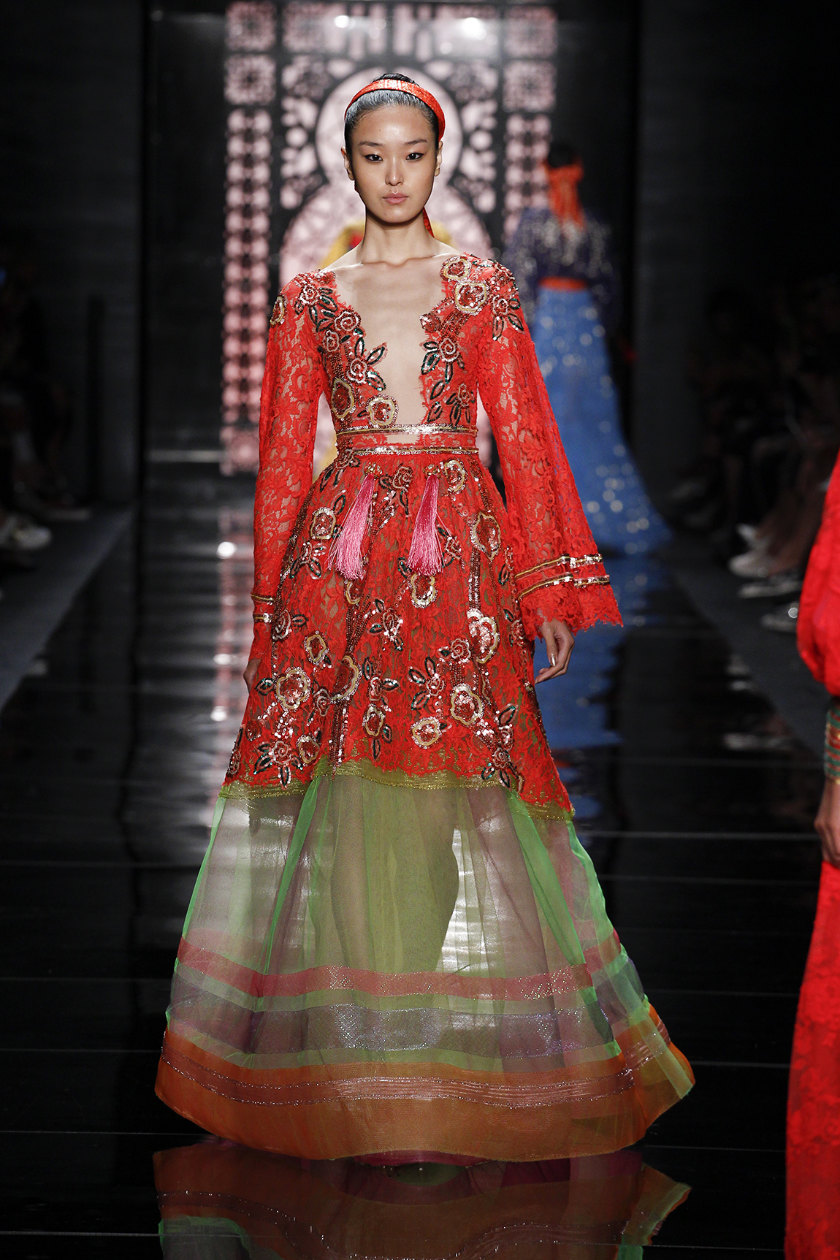
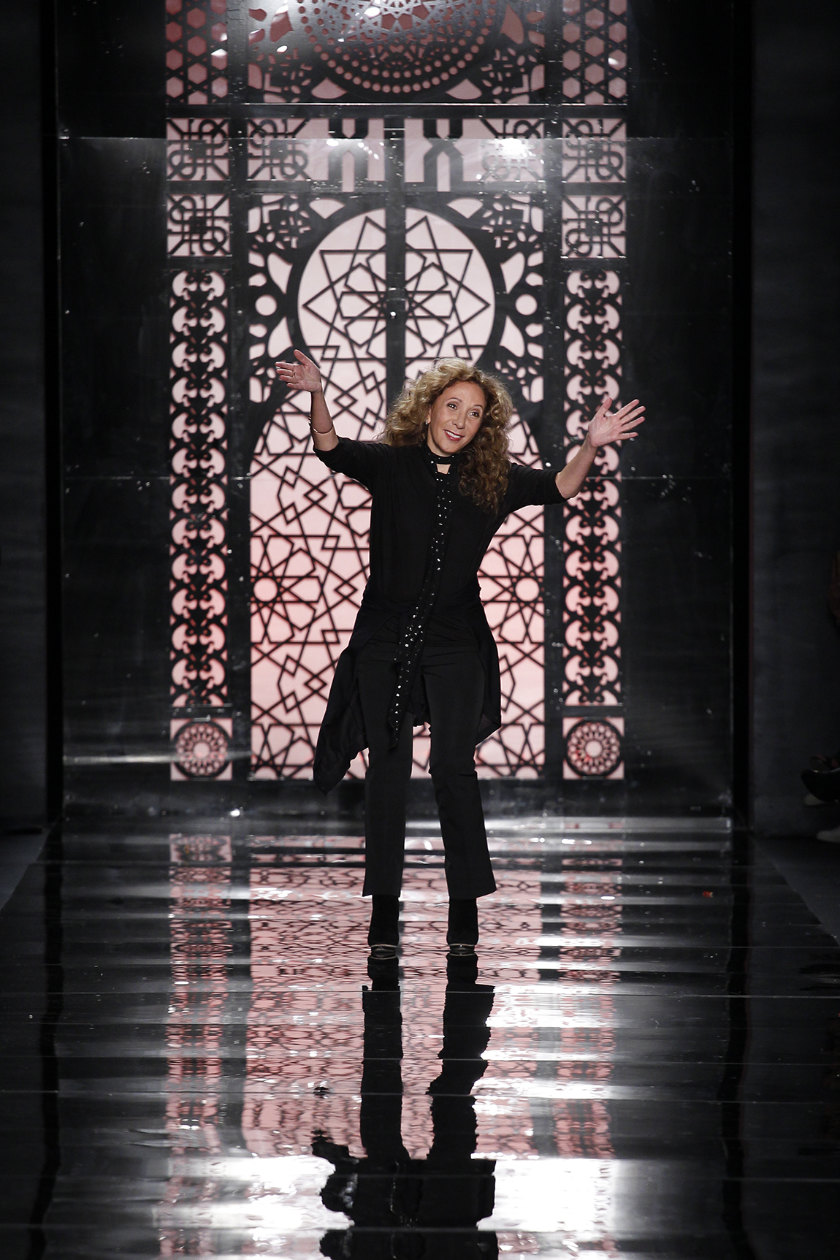
Spring 2016
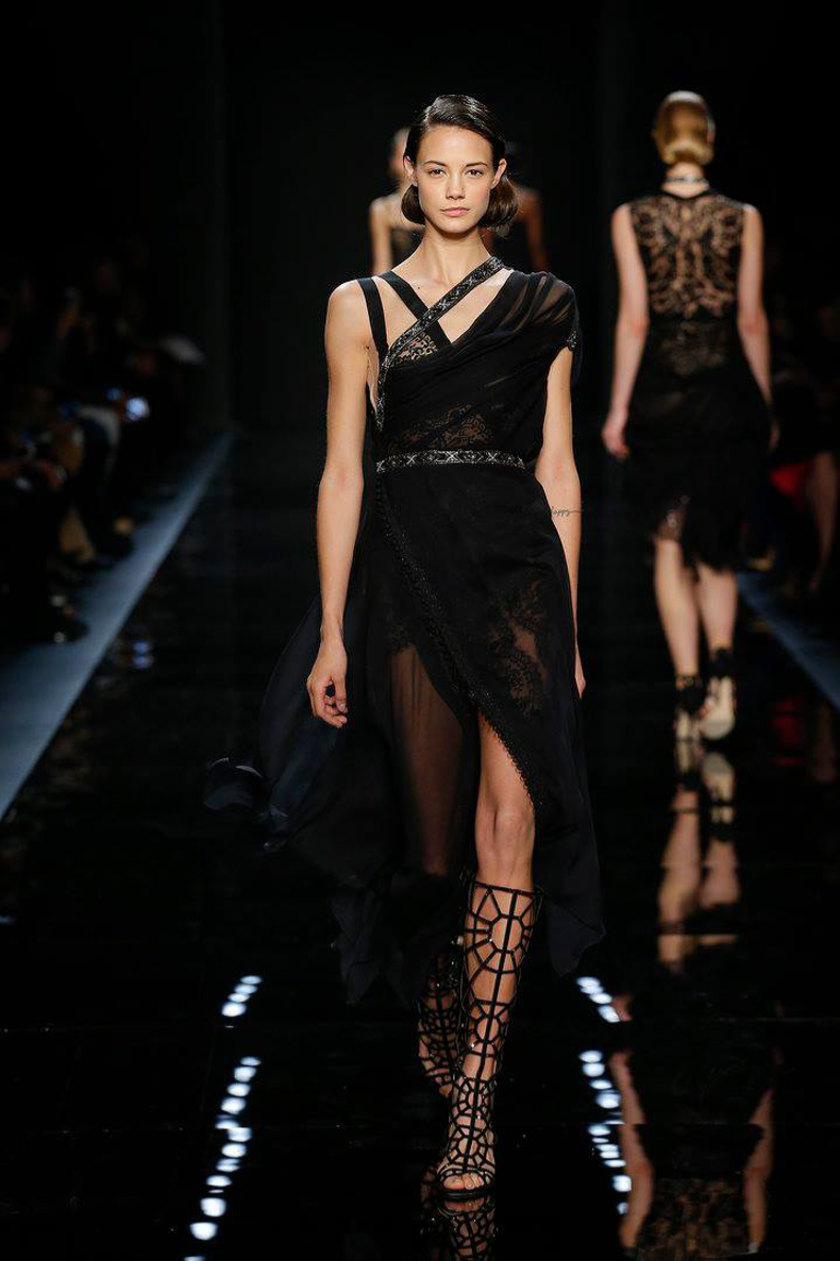
Fall 2016
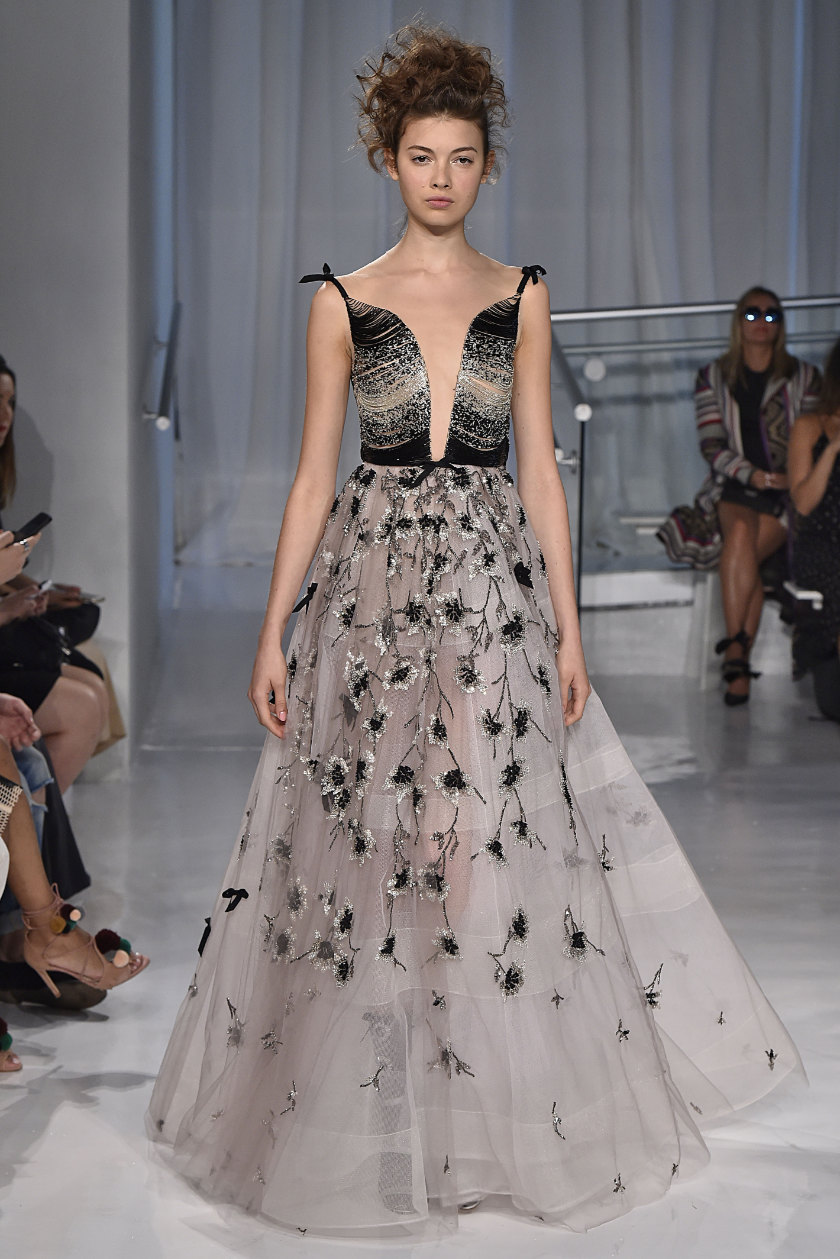
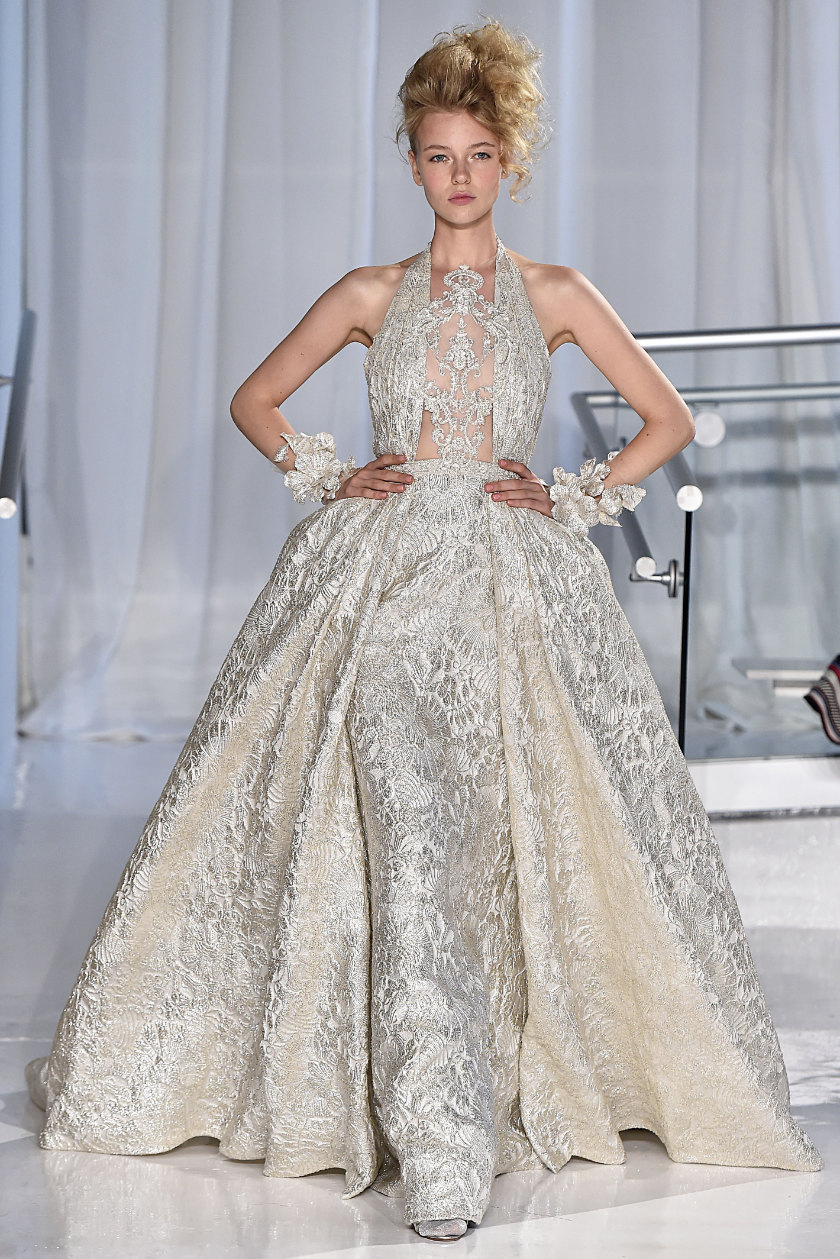
Spring 2017
Taking people to another world has been a hallmark of many Reem Acra collections. That’s the magical quality about them. A cursory glance reveals her thinking: in spring 2016, her show’s opening statement was ‘I just want to take you to my world,’ in English and French. For fall 2016, the collection was entitled The Secret World of the Femme Fatale. Coming closer to today, the resort 2023 couture collection bears the title, 1001 Nights—no secret what that alludes to. Spring 2023 is styled dREEMing of Constantinople.
It’s clear that Acra possesses an international view. ‘I design keeping all cultures in mind, something I consider one of my strengths. My designs appeal to an international clientèle. I am able to create with an American sensibility, a couture French hand and a magical imagination of the east.’
That has drawn everyone from us First Lady Dr Jill Biden to very recognizable celebrity names such as Halle Berry, Jennifer López, Madonna, Taylor Swift, Kristen Stewart, Reese Witherspoon and Catherine Zeta-Jones. Bridal customers have included Le Ann Rimes, Jenna Dewan, and Marcia Cross.
In 2010, she opened a boutique in Beirut, bringing things back to where they started. She is an international figure, serving on the Council of Fashion Designers of America and the Dubai Design and Fashion Council.
At her label, Acra remains busy—even more so, with pre-fall, cruise and others. Yet she manages to achieve it all, crediting it to forward planning and multitasking.
Twenty-five years since she started her company, the future could still take her anywhere, because of this outlook: ‘I love the world of fashion, but I love more the world of creativity. It comes in many different formats.’ Standing still is never an option. •
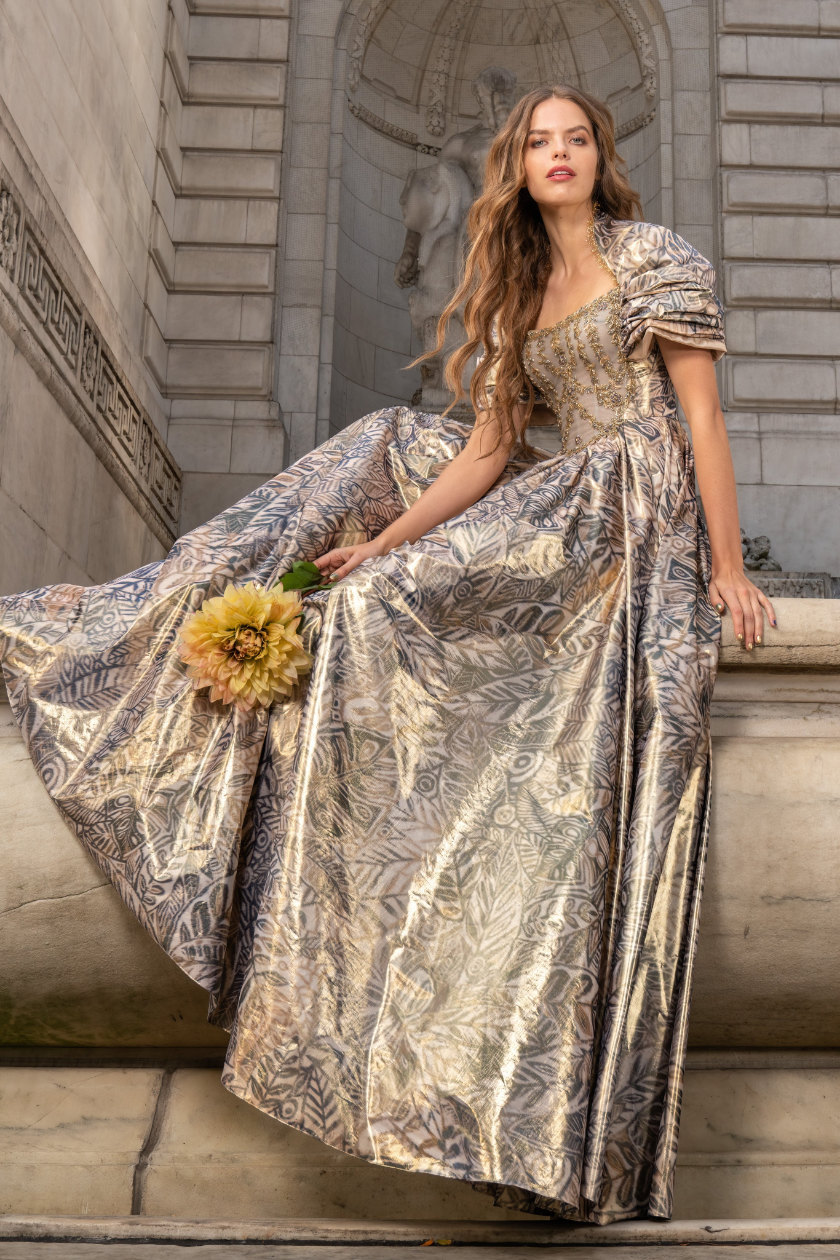
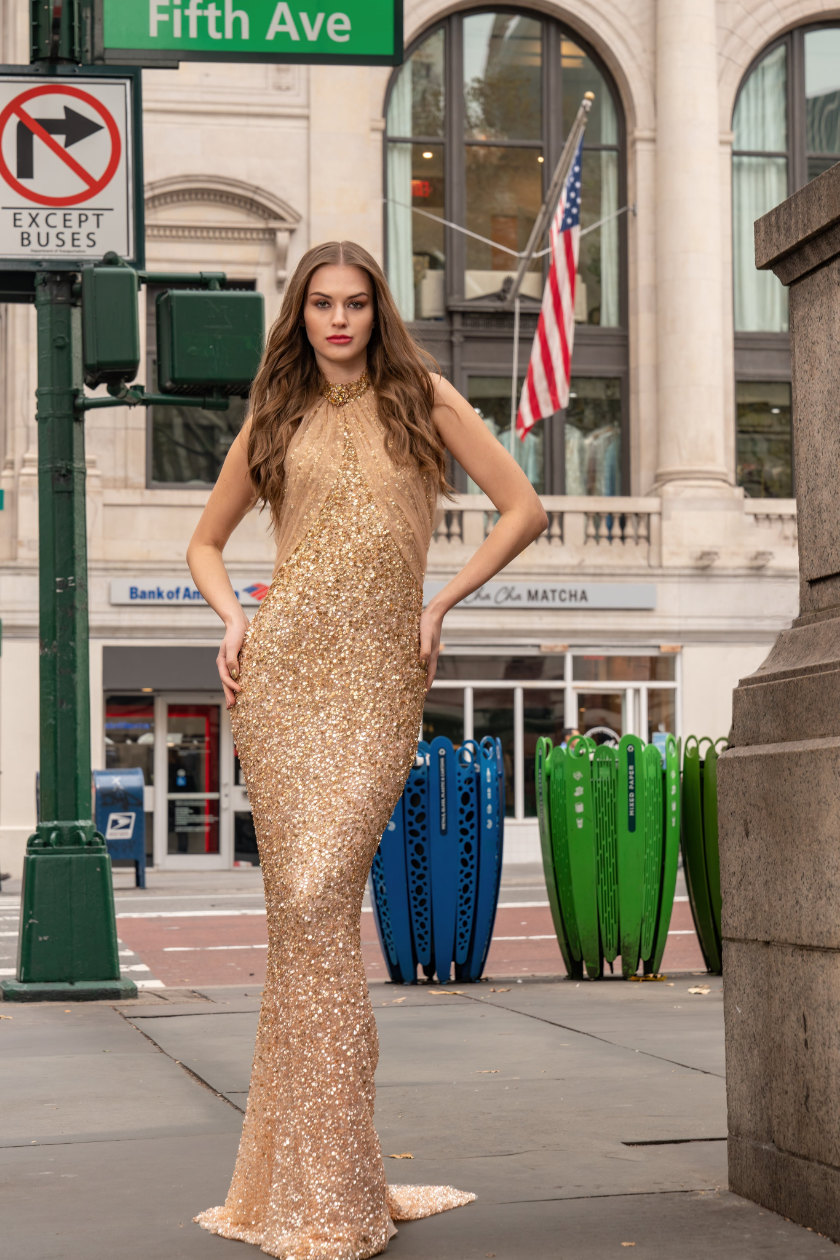
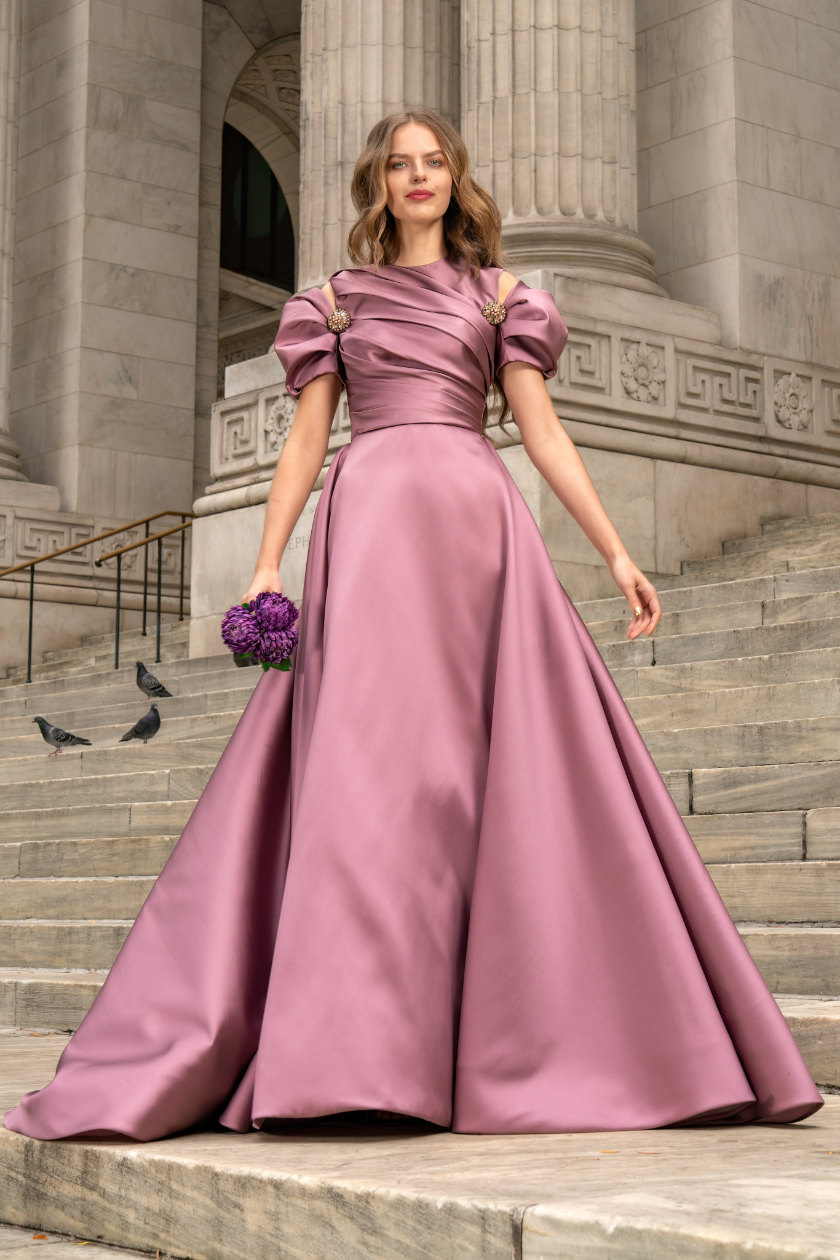
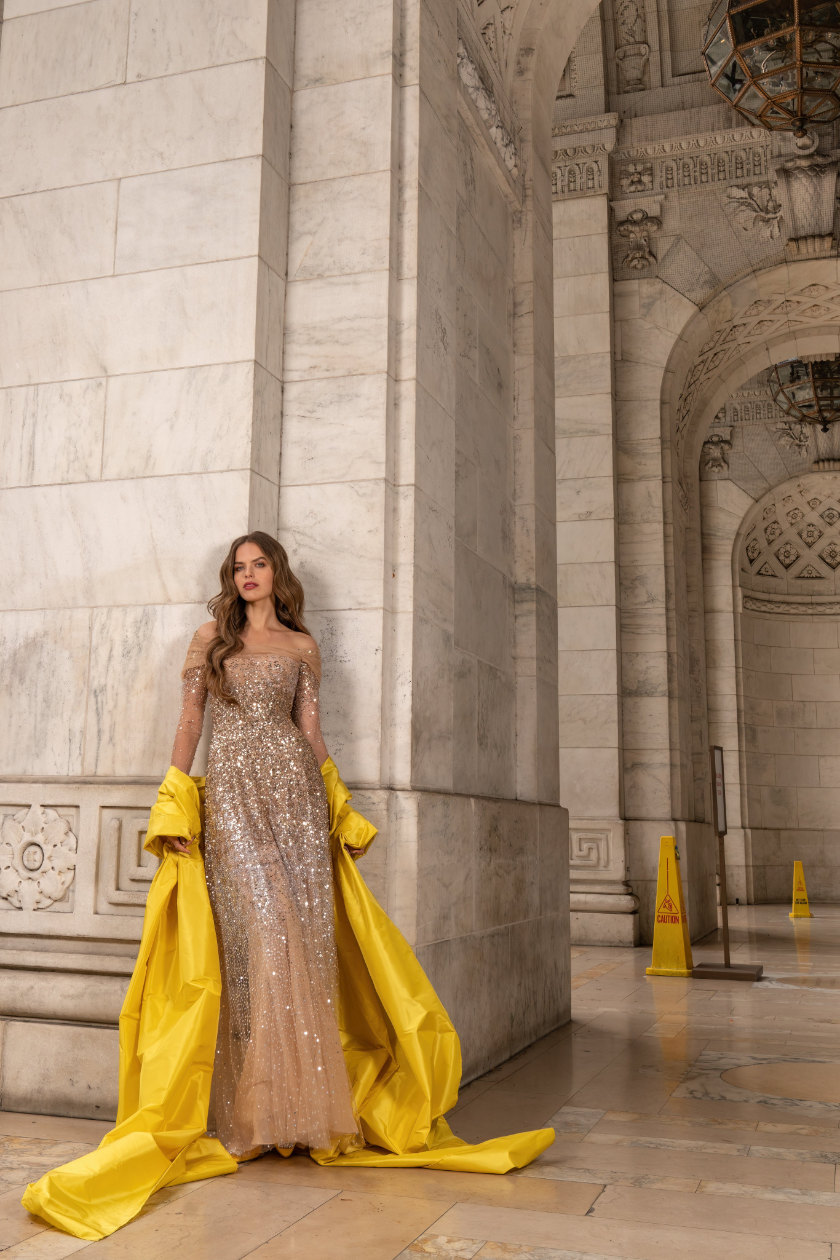
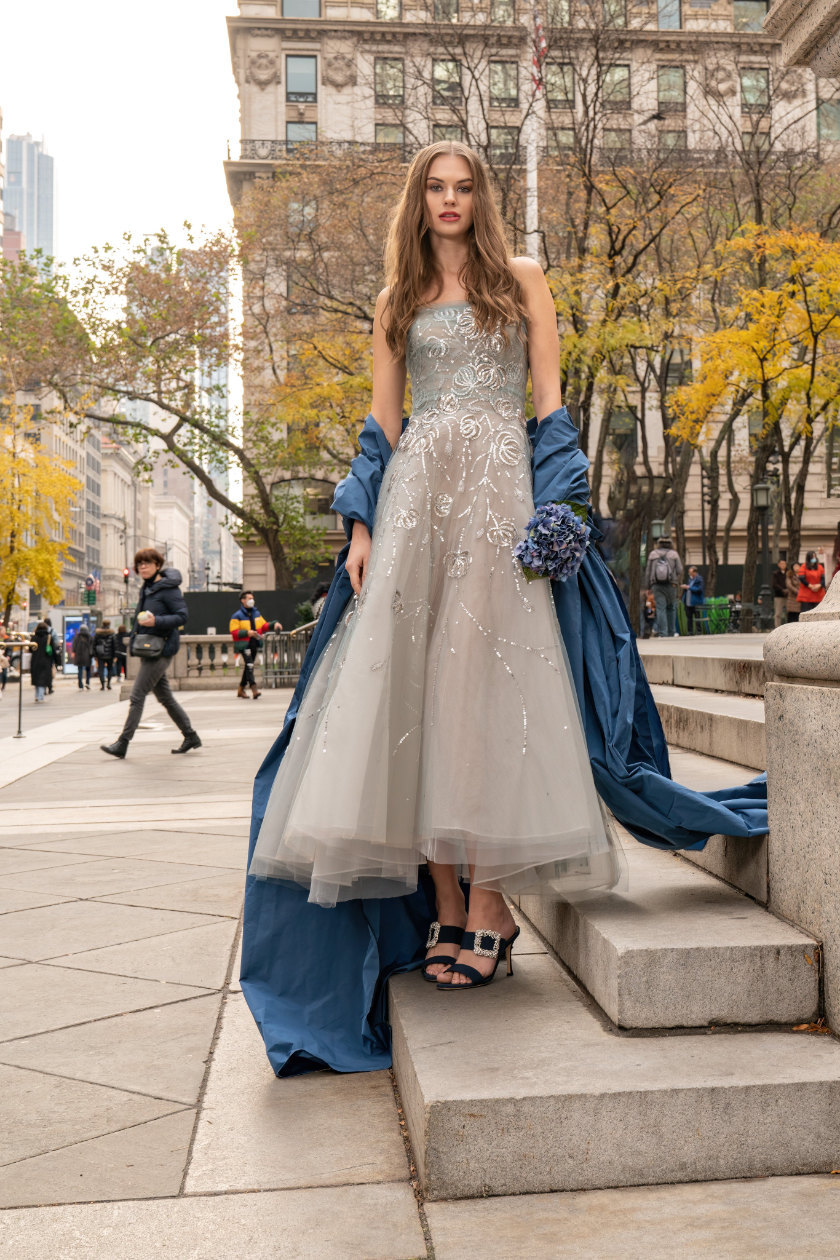
From the pre-fall 2022 Nouvelle collection, photographed in New York City surroundings.
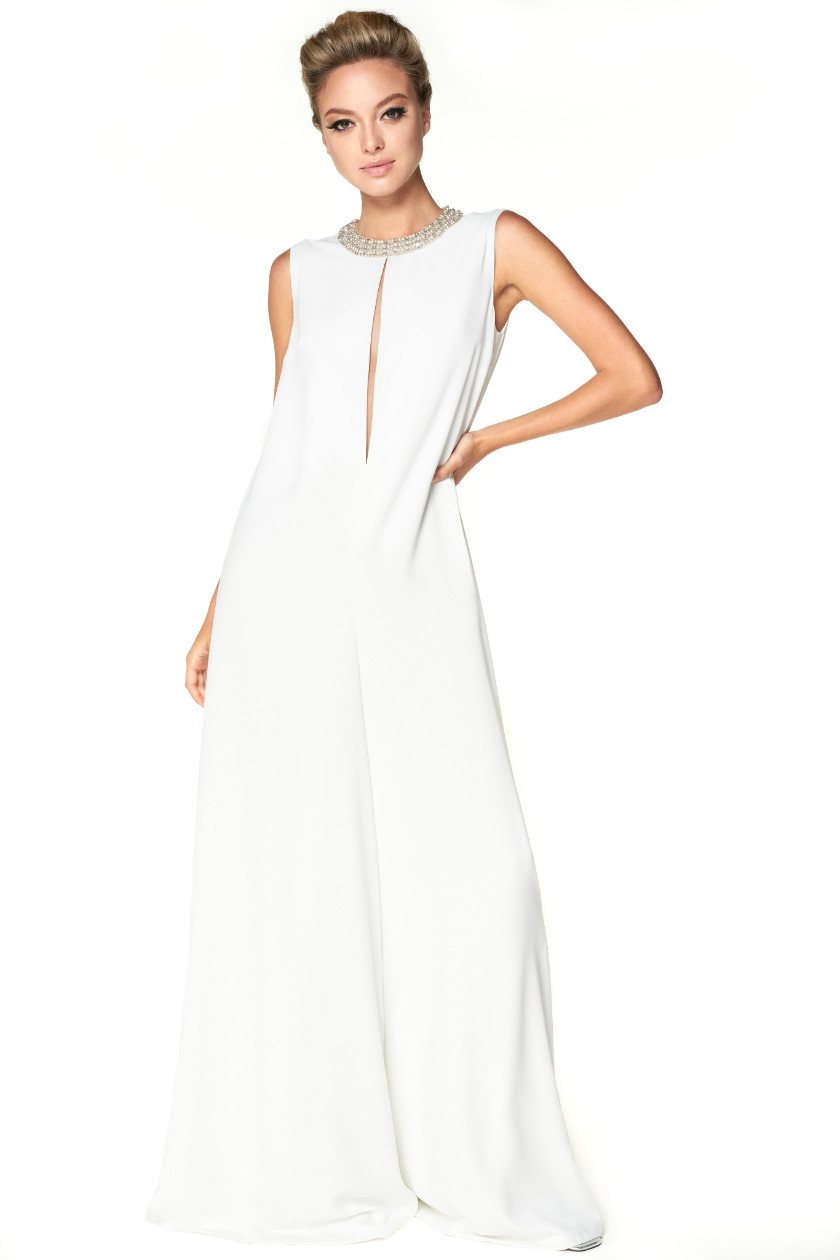
From Reem Acra’s spring 2023 collection, Dreeming of Constantinople.
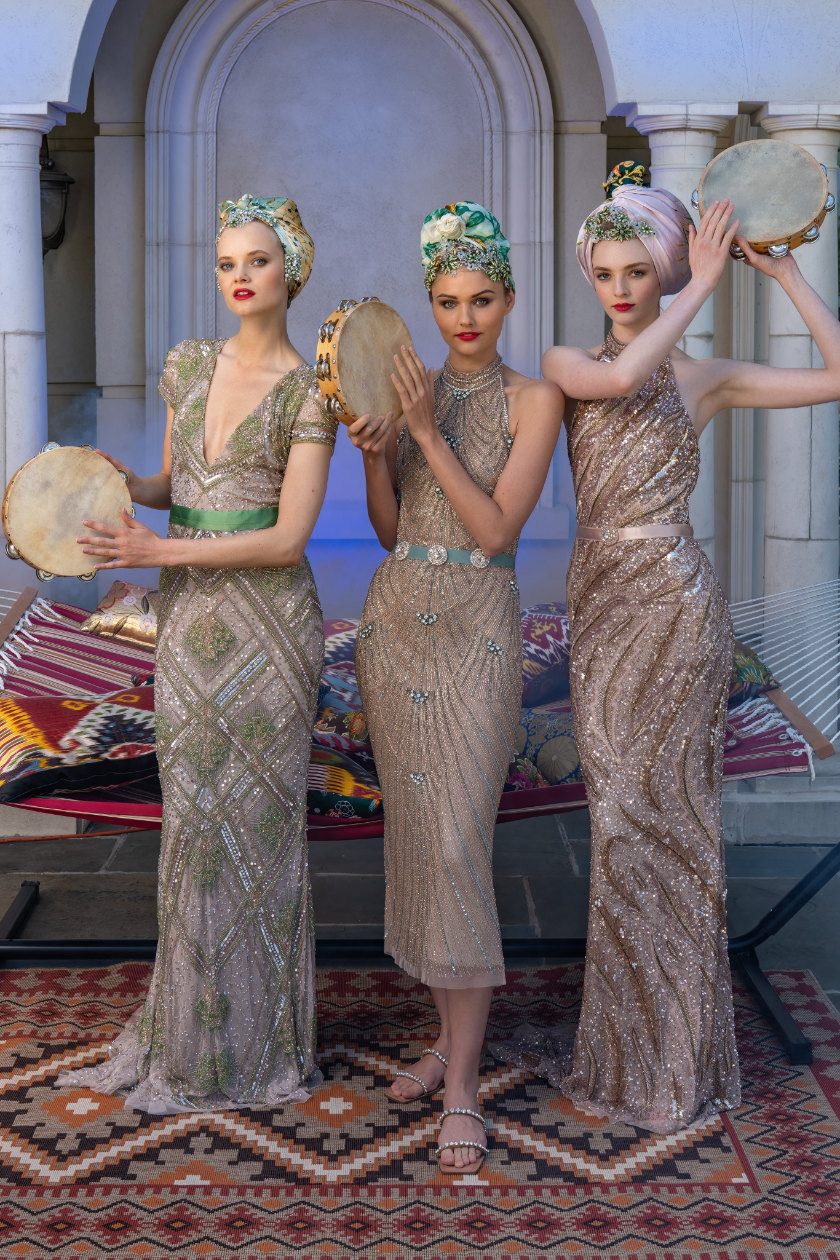
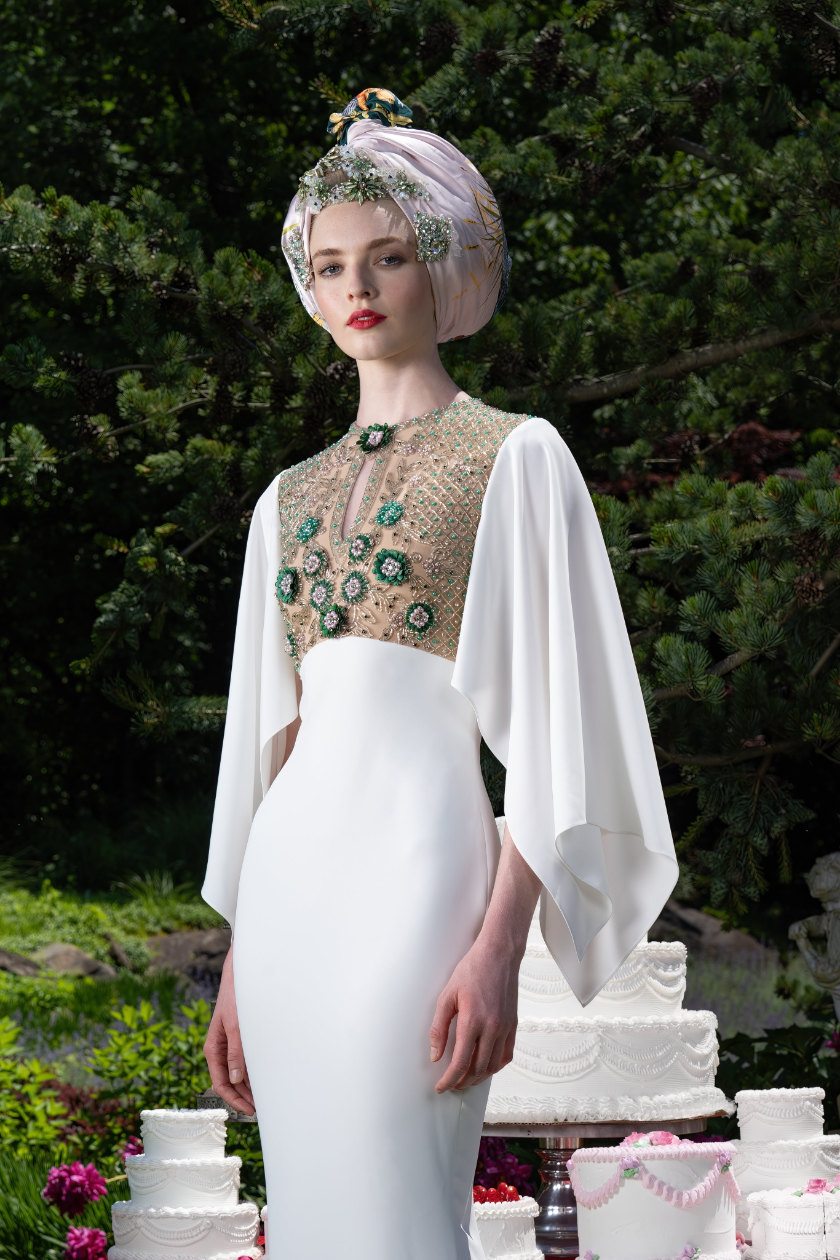
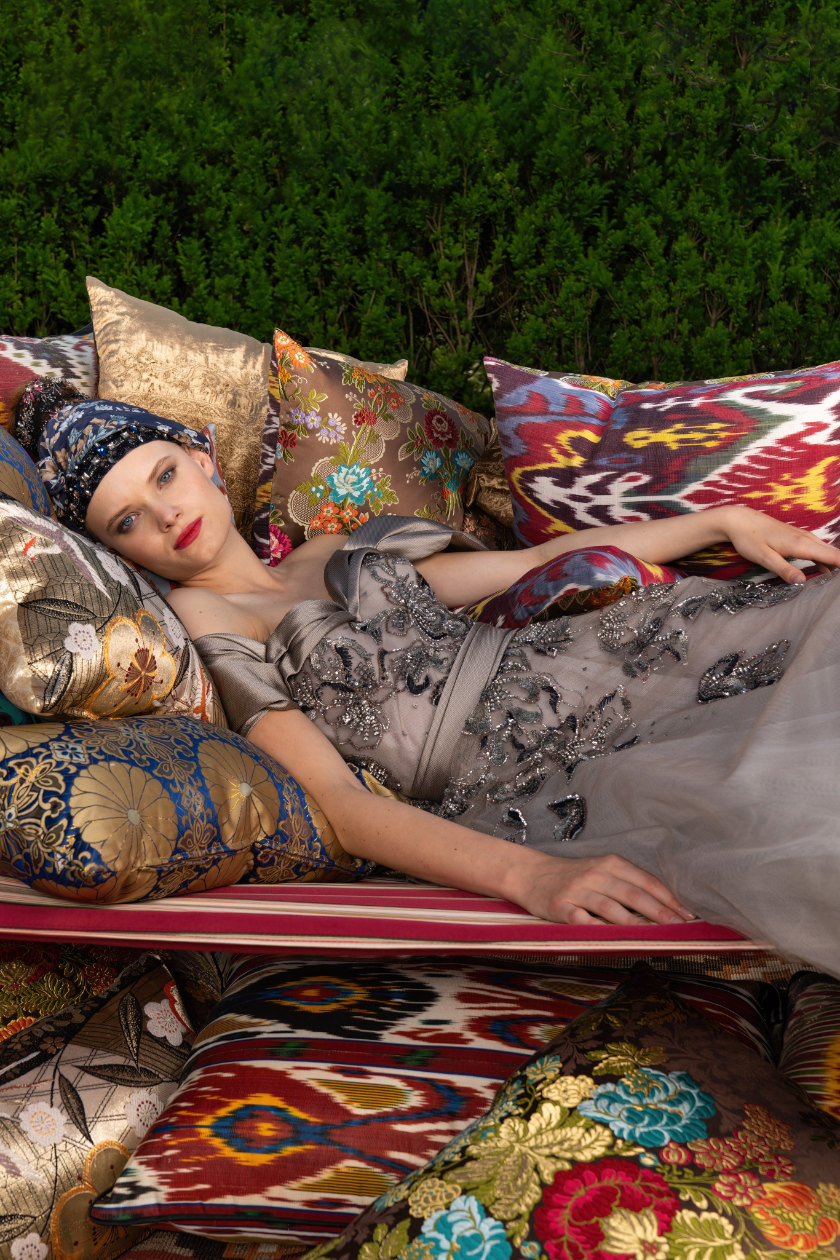
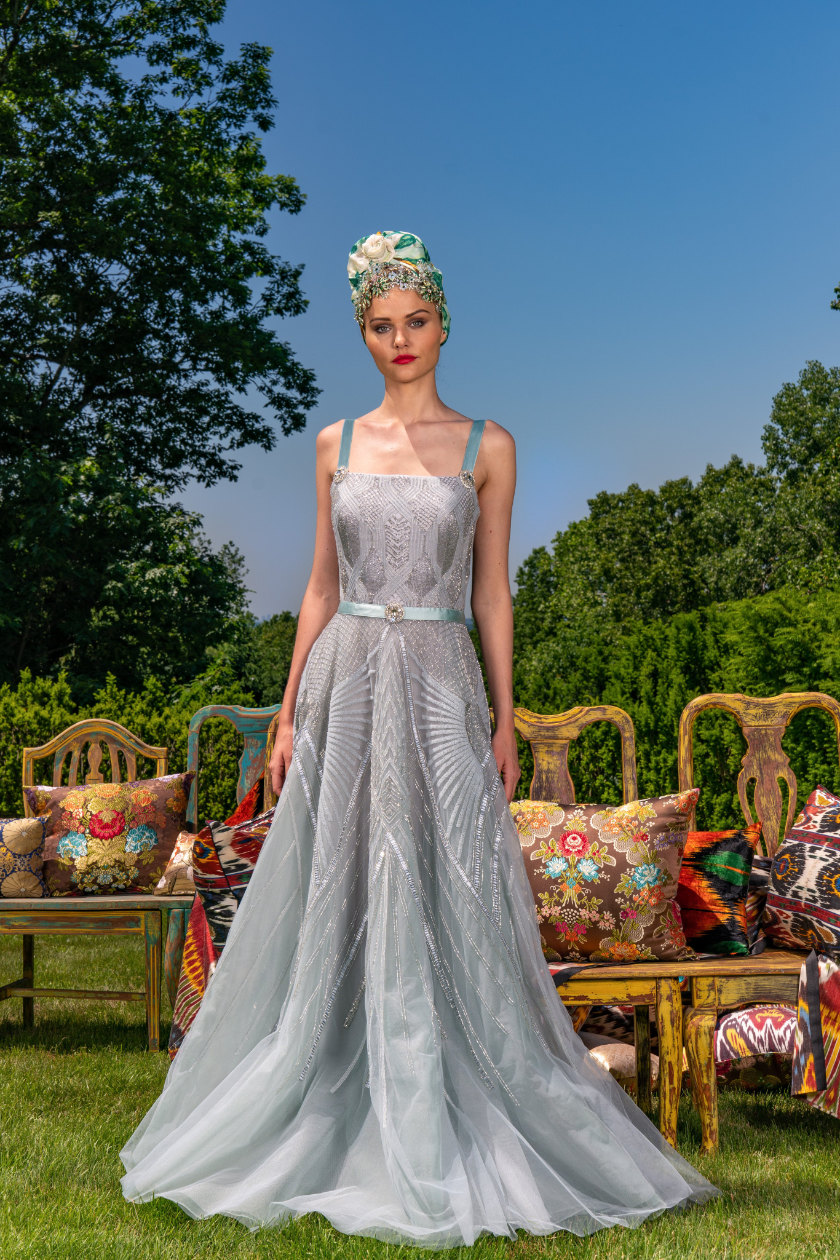
The resort 2023 collection, 1001 Nights.
Jack Yan is founder and publisher of Lucire.
Related articles hand-picked by our editors
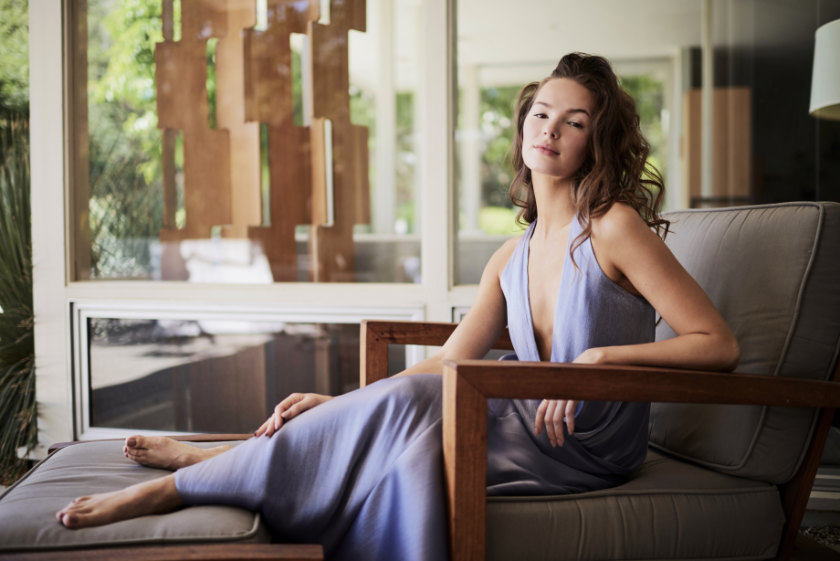
Out of the spotlight
Loin des feux de la rampe
There is nothing that Los Angeles-based designer Peter Cohen wants more than knowing his clients shine, feeling fabulous and confident wearing his work
Il n’y a rien que le designer Peter Cohen, basé à Los Angeles, désire plus que de savoir que ses clients brillent, se sentent fabuleux et confiants en portant son travail
First published in the September 2022 issue of Lucire KSA
Dans le numéro du septembre 2022 de Lucire KSA

Thoughtful and timeless
Réfléchi et intemporel
Slow fashion, elegance, and exceptional quality come together in Estonia with Marimo, the label founded by designer Mariliis Pikkar. Jack Yan interviews her
Slow fashion, élégance et qualité exceptionnelle sont réunis en Estonie avec Marimo, le label fondé par la créatrice Mariliis Pikkar, interviewée par Jack Yan
Photographed by/photographié par Julia Astok
From issue 45 of Lucire
Dans le 45e numéro de Lucire

Born in Riyadh
Né à Riyad
Kayane Mahrejian created her sustainable label, Kaiane Designs, when searching for a wedding dress, and now capably multitasks between designing and working as one of the engineers at NEOM. Jack Yan speaks with her
Kayane Mahrejian a créé son label durable, Kaiane Designs, lors de la recherche d’une robe de mariée, et est désormais capable d’effectuer plusieurs tâches entre la conception et le travail en tant qu’ingénieur chez NEOM. Jack Yan parle avec elle